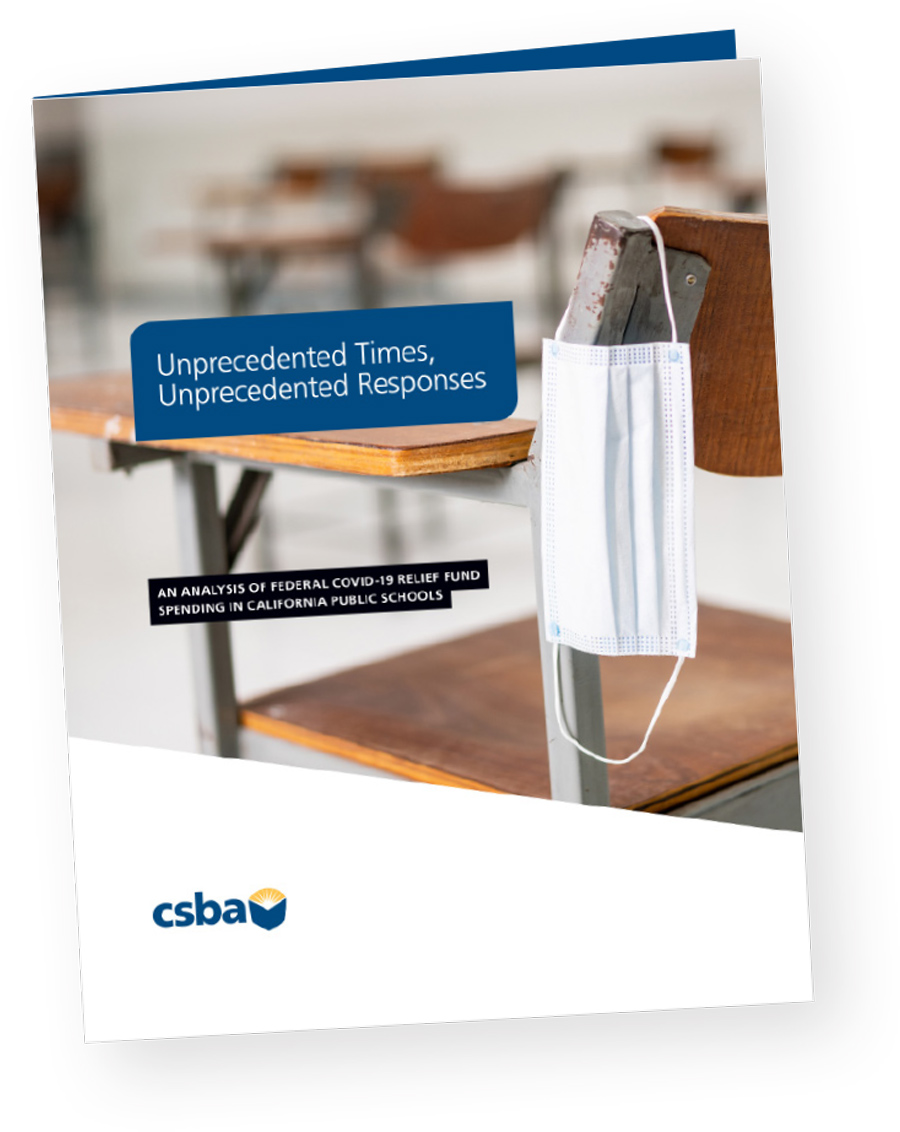That is why CSBA embarked on an intensive research project examining how districts and county offices of education are using COVID relief funding to support the health and safety, instructional and social-emotional needs of students and staff. Using a combination of focus group, survey and state-level expenditure reports, CSBA has developed a three-part series that broadly describes the ways California’s school districts and county office of education have used state and federal COVID-19 relief funding. This research also includes the perspectives of superintendents and chief business officials on spending priorities and related implementation issues.
Unprecedented Times, Unprecedented Responses: An analysis of federal COVID-19 relief fund spending in California public schools presents an analysis of the federal expenditure reports that underscores the necessity of a key element of the relief packages — flexibility. Survey and focus group results round out the picture and give a glimpse not only of the necessity of the relief packages, but of challenges related to spending. For this report, CSBA analyzed more than 900 expenditure reports for the two primary federal COVID-19 relief funds: the Elementary and Secondary School Relief (ESSER) I, II, and III funds and the Governor’s Emergency Education Relief (GEER) Fund.
“CSBA prioritized this research to provide LEAs and the public with an accurate picture of the myriad ways that districts and county offices of education are spending federal COVID relief funding,” said CSBA CEO & Executive Director Vernon M. Billy. “We hope this data will inform the conversation around the necessity and efficacy of relief funding for public schools, not only for COVID-19, but also to respond to future crises and to meet the ongoing needs of California’s nearly 6 million public school students.

Key takeaways
Expenditure report data shows that there is a significant range in the amount spent by California’s school districts and COEs in each of the packages. However, on average, recipients in our sample are spending relief funding and are doing so in line with the rolling deadlines. For example, ESSER I has the closest deadline (January 2023) and districts and COEs have spent 94 percent of their allocated funding as of March 31.
The flexibility built into these relief packages enables school leaders to react in real time to address the needs of students and staff in one of the most unpredictable periods in education history. When interpreting spending in these categories, it is also important to note that they do not capture how LEAs weaved together multiple streams of funding to address local needs.
This research is the first in a series of reports meant to paint a clearer picture of the experiences of school districts and COEs with spending federal and state relief. CSBA’s next reports will explore state funding and then dive into a comprehensive survey of superintendents and chief business officials from 239 school districts and county offices that received COVID relief.